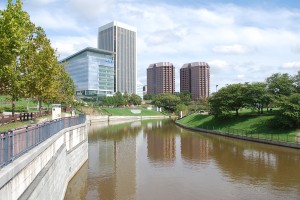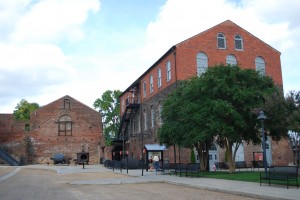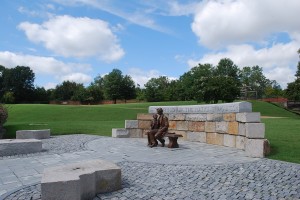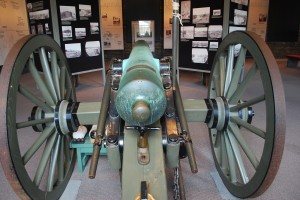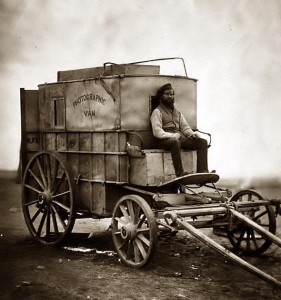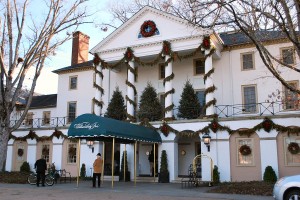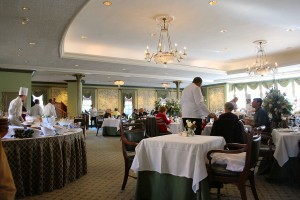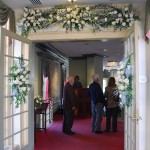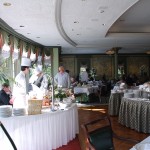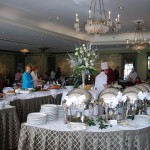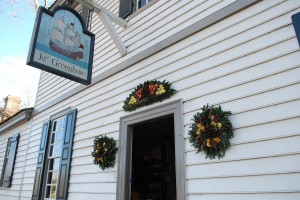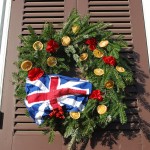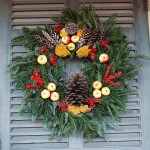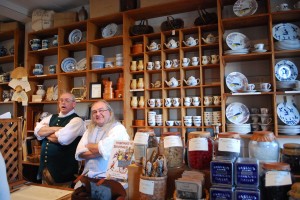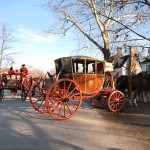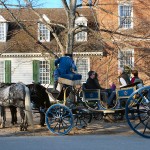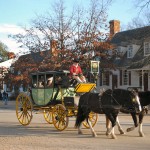December 31, 2011 marked the end of the Sesquicentenial , the 150th anniversary of the beginning of the Civil War, an event memorialized all across this country as the nation looked back on its deadliest war, nearly 700,000 casualties, more than all of our other wars combined. The virtual epicenter of the Civil War, Richmond, VA , is only a two and a half hour drive from the Eastern Shore of Virginia so it makes a great week-end getaway trip. Last fall my husband and I decided to spend a few days in Richmond and, in the spirit of the Sesquicentenial, to take time to tour some of its famous Civil War memorials. Standing on the overwalk above the River District’s Kanawha Canal, looking east towards the tall office tower of the Federal Reserve District Bank in Richmond’s bustling downtown area and south towards the rocky rapids of the James River, I would never have guessed that less than 150 years ago, this entire spot was caught up in a mighty conflagration as the evacuation of Richmond, on April 3, 1865, signalled the near end of the Civil War. The morning of April 2nd, General Robert E. Lee telegraphed Confederate President Jefferson Davis, notifying him that Lee’s line was broken in 3 places, concluding ” I advise that all preparation be made for leaving Richmond tonight.” Ordered by General Ewell, Confederate troops set to work before evacuating to destroy their armory, tobacco warehouses, navel vessels and bridges so they wouldn’t fall into Union hands but the fires they set raged out of control. 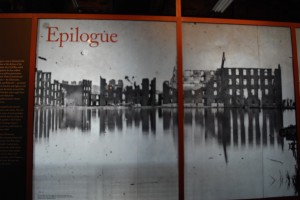 It completely destroyed much of the by- then nearly deserted Richmond but was eventually tamed by the Union forces who began occupying Richmond on April 3rd. Within a week of Richmond’s evacuation, General Lee would surrender his Army of Northern Virginia to General Ulysses S. Grant’s Union forces at Appomattox, VA. Within a week of that surrender, the tragic assassination of President Lincoln on April 14th, especially tragic for the South as the Reconstruction envisioned by Lincoln was very different from the Reconstruction that ensued.
It completely destroyed much of the by- then nearly deserted Richmond but was eventually tamed by the Union forces who began occupying Richmond on April 3rd. Within a week of Richmond’s evacuation, General Lee would surrender his Army of Northern Virginia to General Ulysses S. Grant’s Union forces at Appomattox, VA. Within a week of that surrender, the tragic assassination of President Lincoln on April 14th, especially tragic for the South as the Reconstruction envisioned by Lincoln was very different from the Reconstruction that ensued.
The observance of this 150th anniversary, the Sesquicentennial, of the beginning of the Civil War, was especially poignant in Virginia, on whose soil almost 80 % of the battles were fought. Richmond, one of the South’s most powerful and industrialized cities at that time, became the Capitol of the Confederate States of America and its wealth and industrial capacity became crucial to the Confederate military campaign. Probably no single company was more influential than the Tredegar Iron Works, 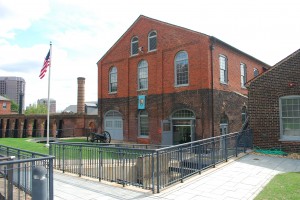 which was the largest company of its kind in the South. Located on a bluff overlooking the James River and utilizing the river’s water to produce steam and to run water wheels, Tredegar produced the majority of the artillery pieces and munitions for the Confederacy during the War as well as the rails for the railroad, rails which became vital in keeping troops and supplies moving. Several of the original buildings are still standing at Tredegar, apparently due to the foresight of its owners in hiring nearly 50 armed guards to prevent its buildings from being set on fire during Richmond’s 1865 evacuation .
which was the largest company of its kind in the South. Located on a bluff overlooking the James River and utilizing the river’s water to produce steam and to run water wheels, Tredegar produced the majority of the artillery pieces and munitions for the Confederacy during the War as well as the rails for the railroad, rails which became vital in keeping troops and supplies moving. Several of the original buildings are still standing at Tredegar, apparently due to the foresight of its owners in hiring nearly 50 armed guards to prevent its buildings from being set on fire during Richmond’s 1865 evacuation .
The Tredegar site and the surviving buildings are now a museum and serve as the Visitor Center for the Richmond National Battlefield Park, operated by the National Park Service. It is also the location of the famous statue of Abraham Lincoln, sitting with his son Tad, memorializing their visit to Richmond on April 4, 1865. Just to give an idea of the important battles that were fought in and around the Richmond area, the 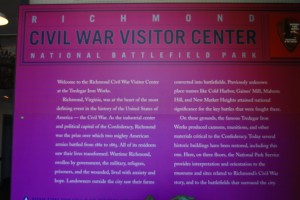 Richmond National Battlefield Park self-guided driving tour includes the preserved battlefields of Beaver Dam Creek battlefield, Gaines Mill battlefield, Glendale battlefield, Malvern Hill battlefield, Drewery’s Bluff battlefield and the Cold Harbor battlefield, all of which have self-guided walking trails winding through them.
Richmond National Battlefield Park self-guided driving tour includes the preserved battlefields of Beaver Dam Creek battlefield, Gaines Mill battlefield, Glendale battlefield, Malvern Hill battlefield, Drewery’s Bluff battlefield and the Cold Harbor battlefield, all of which have self-guided walking trails winding through them.
One of the most poingnant aspects of the museum is its ” Voices From The Home Front” display, recorded narrations of letters and diary entries from both soldiers and everyday people written during the War. One letter, written by a young soldier to his father, starts out by saying that “this is the last letter you shall receive from me…”, explaining that he had been struck by a large piece of shrapnel and is not expected to survive much longer. A diary entry from a young Richmond girl noted that “all of Cary Street is burned and Main Street is on fire”, that the fire is spreading rapidly, that she and her friend Flory run to her front gate almost every minute to see if the Yankees are coming into the city.
A bronze cannon, actually produced by the Tredegar company, typically so heavy it took six six draft horses to pull, plus an exhibit of the ammunitions used in such artillery pieces is one of the museum’s most dramatic exhibits. Precision workmanship, cast from heavy, solid metal, it took 6 men to fire that cannon — 2 men on the ammunition supply box, called a “Limber Chest” which was placed well behind the cannon, 1 runner between the Limber Chest and the cannon, 1 loader, 1 rammer whose job was ram the shot in and then, after firing, to sponge out the cannon interior to extinguish any remaining sparks and an officer whose job was to finalize the location to be targeted, the particular shot or shells to be used, the degree of elevation of the cannon ( which was determinate of the range the shot would travel ) and then to actually call the order to fire. 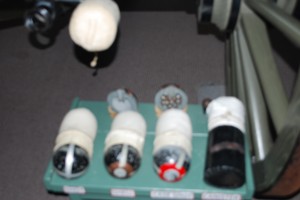 But what really struck me was the ammunition itself. I had supposed that “cannonballs” were solid balls of metal– which they were previously. But no, by the time of the Civil War the military machine had already invented a more deadly product, a cannonball with a hollow center which was then filled with 1 inch munition balls. Today, in this era of Hellfire missiles fired from drones, cruise missiles fired from offshore ships, intercontinental ballistic missiles poised at the ready all over the world, missiles with names like Apache, Viper, Sidewinder and Tomahawk, names heard almost nightly on the news, it seems like there is a numbness to the destruction of war, like it’s not even real. But standing in Tredegar, looking at the exhibit of the solid cannonball next to the new, “improved” cannonball crammed to the max with deadly smaller shot, the escalating efforts of man to create ever more destructive weaponry came through loud and clear.
But what really struck me was the ammunition itself. I had supposed that “cannonballs” were solid balls of metal– which they were previously. But no, by the time of the Civil War the military machine had already invented a more deadly product, a cannonball with a hollow center which was then filled with 1 inch munition balls. Today, in this era of Hellfire missiles fired from drones, cruise missiles fired from offshore ships, intercontinental ballistic missiles poised at the ready all over the world, missiles with names like Apache, Viper, Sidewinder and Tomahawk, names heard almost nightly on the news, it seems like there is a numbness to the destruction of war, like it’s not even real. But standing in Tredegar, looking at the exhibit of the solid cannonball next to the new, “improved” cannonball crammed to the max with deadly smaller shot, the escalating efforts of man to create ever more destructive weaponry came through loud and clear.
Our final stop in the museum was the book store, filled to the brim with books and DVD’s about the Civil War and its various campaigns. The National Park Service actually has created a series of short, about 50 pages or so, but informative booklets about various aspects of the War and we bought “The Seige of Petersburg“, which detailed the decisive campaign of the War. Located less than 25 miles from Richmond, Petersburg, VA was held under seige for nine and a half months by Grant, resulting in over 40,000 Union casualties and about 30,000 Confederate casualties. But when Grant’s army finally broke through Lee’s entrenched lines surrounding Petersburg, it was all over but the shouting. The Union occupation of Richmond and Lee’s surrender at Appomattox were a direct result of the fall of Petersburg. The other book I ended up buying chronicled War photos by Mathew B. Brady. Brady was the most famous photographer of his day, if you were an important person you sat for a Brady portrait. In fact, one of his portraits of Lincoln was used for the engraving for the five dollar bill.  When the War broke out, Brady set up several horse-drawn mobile photography wagons, including darkrooms, to photograph all aspects of various Union campaigns on site, something never before undertaken. As he had official permission from Chief of the Army McDowell to accompany the Union troops, effectively Brady was the first military “embedded” photographer. Entitled “Mr Lincoln’s Camera Man” by Roy Meredith and printed by Dover Publications (www.doverpublications.com ), this book is a tremendous visual accounting of the Civil War and includes 350 photographs taken by Brady during that period which have been reproduced directly from the negatives owned by the Library of Congress. It’s primarily because of Brady that we can look back 150 years later and see much of what really happened during those bloody years.
When the War broke out, Brady set up several horse-drawn mobile photography wagons, including darkrooms, to photograph all aspects of various Union campaigns on site, something never before undertaken. As he had official permission from Chief of the Army McDowell to accompany the Union troops, effectively Brady was the first military “embedded” photographer. Entitled “Mr Lincoln’s Camera Man” by Roy Meredith and printed by Dover Publications (www.doverpublications.com ), this book is a tremendous visual accounting of the Civil War and includes 350 photographs taken by Brady during that period which have been reproduced directly from the negatives owned by the Library of Congress. It’s primarily because of Brady that we can look back 150 years later and see much of what really happened during those bloody years.
(Posted by Marlene Cree, licensed Virginia agent with Blue Heron Realty Co., 7134 Wilsonia Neck Dr., Machipongo, VA)
